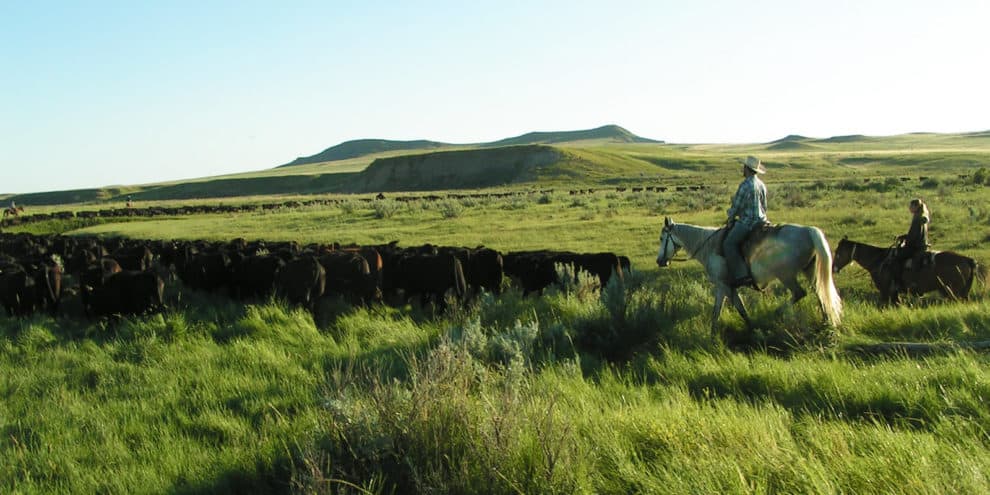Holistic Planned Grazing (HPG) is a progressive approach to land management that can have significant positive impacts on a ranch’s capacity, profitability, and overall ecological health. By using livestock to mimic the natural historical grazing patterns of bison and other ungulates, a ranch’s grasses become healthier and more resilient, which produces positive ripple effects throughout the entire ranching operation.
Through focused planning, active management of livestock herds, and a meticulous monitoring of grasses’ health, ranchers can increase stocking rates far beyond traditional ranching norms, which in turn leads to improved financial performance. Amazingly, these increased stocking rates do not degrade the land due to overgrazing, rather the grasses become healthier and ranch biodiversity can increase significantly.
Grasslands LLC is a renowned ranch management company that implements HPG on large-acreage ranch properties around the globe. As part of the Mountain & Prairie Podcast, I sat down with the Jim Howell, the CEO of Grasslands LLC, to discuss the nitty-gritty details of his process for managing ranches using HPG principles. Much of our conversation revolves around two of Grasslands’ eastern Montana ranches– Cinch Buckle Ranch and Antelope Springs Ranch. Both ranches serve as excellent case studies of how holistic management can be a true winning proposition for the land, animals, investors, and all other stakeholders.
Highlights of our in-depth conversation include:
- Holistic planned grazing, explained
- History of Grasslands’ work in the northern Great Plains
- Common traits of successful ranches across all geographies
- Techniques for drastically increasing stocking rates on Antelope Springs and Cinch Buckle
- The compounding consequences of grazing decisions
- Lessons learned from ranching the Great Plains
- Specific tools for grazing management
- Replenishing ecological capital while remaining profitable
- Improved quantifiable biodiversity and ecological health on both ranches
- Importance of relationships with state and federal government agencies
- Cinch Buckle and Antelope Springs as investments for non-ranchers
- Best books and resources on planned grazing
- And much more…
For the full list of topics discussed and links to all resources mentioned, visit the Episode webpage.
As you’ll hear, Grasslands has invested an amazing amount of work, brain power, and resources into the Cinch Buckle and Antelope Springs Ranches, making them two of the most attractive and impressive cattle ranches for sale on the market today.
LISTEN OR DOWNLOAD THE EPISODE:
Written by (and photo credit to) Ed Roberson, a Colorado-based ranch broker and land conservation consultant who has worked extensively throughout the Rocky Mountain West.
This content may not be used or reproduced in any manner whatsoever, in part or in whole, without written permission of LANDTHINK. Use of this content without permission is a violation of federal copyright law. The articles, posts, comments, opinions and information provided by LANDTHINK are for informational and research purposes only and DOES NOT substitute or coincide with the advice of an attorney, accountant, real estate broker or any other licensed real estate professional. LANDTHINK strongly advises visitors and readers to seek their own professional guidance and advice related to buying, investing in or selling real estate.










Add Comment